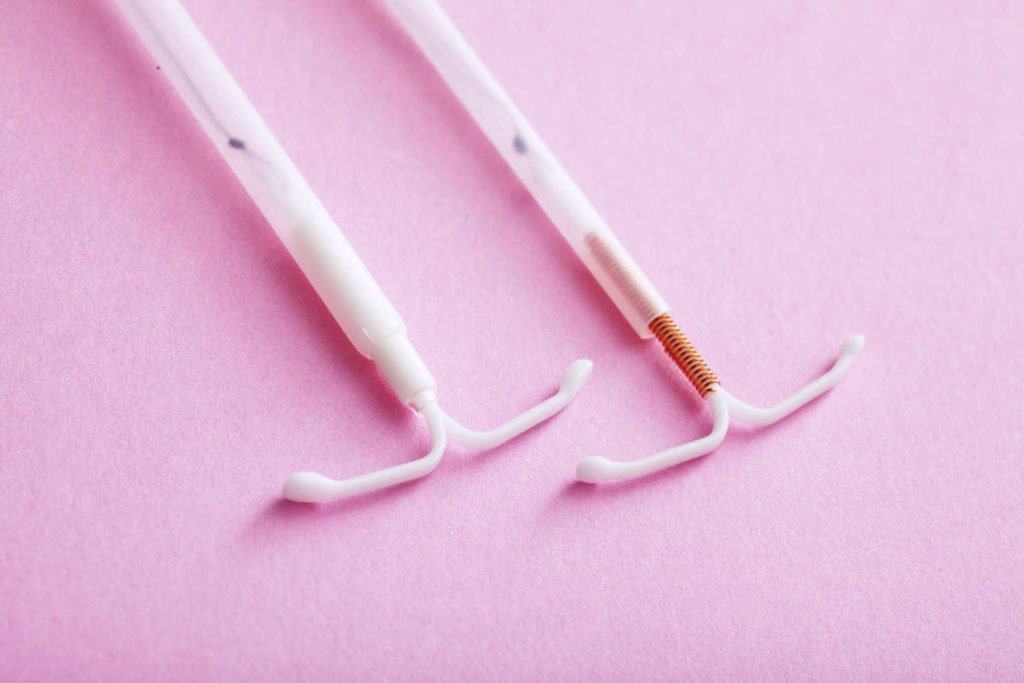Contents:
- Medical Video: Patient Education Video: Intrauterine Device (IUD)
- How does the IUD work?
- How effective is the IUD?
- Protection against sexually transmitted diseases
- Possible side effects
- Forced expenditure
- Uterine perforation
- Pelvic inflammatory disease
- Who uses it?
- How to get it?
Medical Video: Patient Education Video: Intrauterine Device (IUD)
Contraception (IUD) is a coin-sized T-shaped plastic placed in the uterus to prevent pregnancy. There are two types of IUDs - one that is covered with copper, the other releases the hormone progesterone.
How does the IUD work?
A copper-coated IUD prevents pregnancy by blocking sperm from fertilizing the egg. This tool also makes eggs harder to fertilize in the womb. When an IUD is coated with progesterone, the method works the same, but also also makes the cervical fluid thicker, thinning the uterine lining, and in some cases stopping ovulation. This prevents sperm from fertilizing the egg.
One type of progesterone IUD can also be used to help reduce blood flow in women who experience heavy menstrual pain (sometimes called dysmenorrhea).
How effective is the IUD?
Both types of IUDs are very effective in preventing pregnancy. For several years, only 1 in 100 couples using an IUD will experience a pregnancy.
IUDs are effective over time and last long. Copper IUDs can last up to 10 years. The progesterone IUD can last for 3 to 5 years, depending on the brand. This makes an IUD a good choice for women who are not ready to start a family. Although an IUD can last for a long time, a gynecologist or special practitioner can withdraw it at any time.
Protection against sexually transmitted diseases
IUDs do not protect themselves against sexually transmitted diseases. Those who have sex must always use a condom together with an IUD to protect themselves against sexually transmitted diseases.
The doctor or practitioner will check and make sure you don't have a sexually transmitted disease before installing an IUD. If a woman uses an IUD together when she has an infection, this can cause pelvic inflammatory disease.
The absence of sex is the only method that always prevents pregnancy and sexually transmitted diseases.
Possible side effects
The most common side effects of IUDs include:
- irregular bleeding during the first few months
- with a copper IUD, more menstruation and cramping
- menstruation is shorter (or not menstruating at all) with some types of progesterone IUDs
- PMS-like symptoms, such as headaches, zits, and pains in the breast with hormone IUDs
Problems that rarely occur include:
Forced expenditure
IUDs can come out of a woman's womb because of an incident (called "forced expenditure"). Sometimes a woman does not know this is happening. The overall risk of this is low, but it may be a bit common in women who have never had a baby.
You can check if the IUD is still in place by feeling the thread (the doctor or nurse can explain to you how to do it). It would be better to let your doctor know vaginal vaginal discharge, cramps or pain, fever, or the length of the IUD thread changes.
You will need to do a re-examination with the doctor within 3 months after the first IUD is placed. The doctor or nurse will check the IUD is placed correctly.
Uterine perforation
There is a very small risk (1 in 1,000) The IUD may be pushed through the uterine wall while being inserted into.
Pelvic inflammatory disease
There is a low risk that infection from bacteria enters the uterus through the placement of an IUD. Most infections occur within the first 20 days after IUD placement.
Who uses it?
IUDs are a good family planning choice for almost all women. However, an IUD is not recommended if you:
- suffer from pelvic inflammatory disease or active sexually transmitted infections
- pregnant or maybe pregnant
- have problems with the uterus such as disease or malformation, or if you experience abnormal bleeding
Experts recommend an IUD as a good family planning choice for young women and teenagers because they last a long time, do not need daily care, and are very effective in preventing pregnancy. The latest types of smaller IUDs and the use of low doses of progesterone, might make it a better choice for women who have never had a baby.
How to get it?
An IUD must be inserted into the uterus by a doctor or nurse. It's easier to do when menstruating, but an IUD can be inserted at any time during pregnancy. Copper IUDs need to be replaced every 10 years, and the progesterone IUD should be replaced every 3-5 years, depending on the brand.
If you use an IUD, talk to your doctor to find out which birth control option is good for you.












